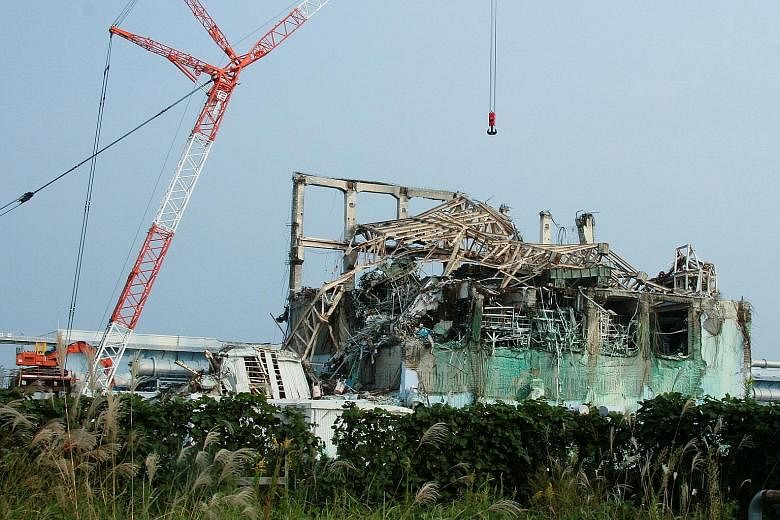TOKYO • A Japanese court yesterday acquitted three former officials from Tokyo Electric Power Company Holdings (Tepco), the firm that operated the Fukushima nuclear plant, in the only criminal trial to stem from the 2011 disaster. Here are some key developments in the worst atomic accident since Chernobyl in 1986.
2011
March 11: A 9.0-magnitude earthquake strikes off Japan's north-east coast, causing a massive tsunami that destroys entire towns and villages along the Pacific shore, leaving nearly 18,500 people dead or missing. The power supply and reactor cooling systems at the coastal Fukushima Daiichi nuclear power plant, about 220km north-east of Tokyo, are damaged, causing fuel inside to overheat and melt down. The Japanese government issues evacuation orders to residents living in the immediate vicinity of the plant. The government gradually expands the order.
March 12: Workers open a reactor vent, releasing pressure and radioactive fumes from inside. The first of a series of hydrogen explosions at the plant rips through a building casing reactor No. 1, but the reactor itself remains intact. Some 160,000 people living near the plant leave their homes.
March 16: Emperor Akihito makes an emergency television address in a bid to reassure a worried public.
Dec 16: Japan says it has tamed the leaking reactors, declaring that they are in a state of cold shutdown.
2012
June 11: About 1,300 Fukushima residents file a criminal complaint against Tepco executives and others over the accident, starting a series of legal complaints related to the disaster to be filed.
June 20: Tepco releases an accident report that says the tsunami's strength was beyond what could have reasonably been foreseen.
July 4: A panel of experts appointed by Parliament concludes that the accident was "a profoundly man-made disaster - that could and should have been foreseen and prevented".
2013
Sept 7: Prime Minister Shinzo Abe says the Fukushima crisis is "under control" in a speech to the International Olympic Committee. Tokyo wins its bid to host the 2020 Olympic Games. Fukushima plant crews work to keep the situation under control, including containing huge amounts of waste water used to cool the crippled reactors. Decommissioning work is expected to take decades.
Sept 9: Prosecutors decline to press charges against three former Tepco executives and other officials, saying there is little chance of winning a conviction.
2015
July 31: A judicial review panel composed of ordinary citizens rules - for the second time since the accident - that the three Tepco executives should be put on trial, forcing prosecutors to proceed with the case.
2017
March 17: A court for the first time orders the government and Tepco to pay compensation, ordering a total of 38.6 million yen (S$493,000) to be paid to residents who had to flee their homes after the nuclear disaster.
June 30: The three Tepco executives plead not guilty to professional negligence resulting in death and injury.
2018
Feb 8: A Tokyo court orders Tepco to pay US$10 million (S$14 million) in fresh damages to plaintiffs who fled their homes after the disaster, more than what the operator had offered in compensation.
2019
Sept 19: The Tokyo District Court acquits the three former Tepco executives of professional negligence in what has been the only criminal prosecution stemming from the Fukushima disaster. The men had faced up to five years in prison.
AGENCE FRANCE-PRESSE

